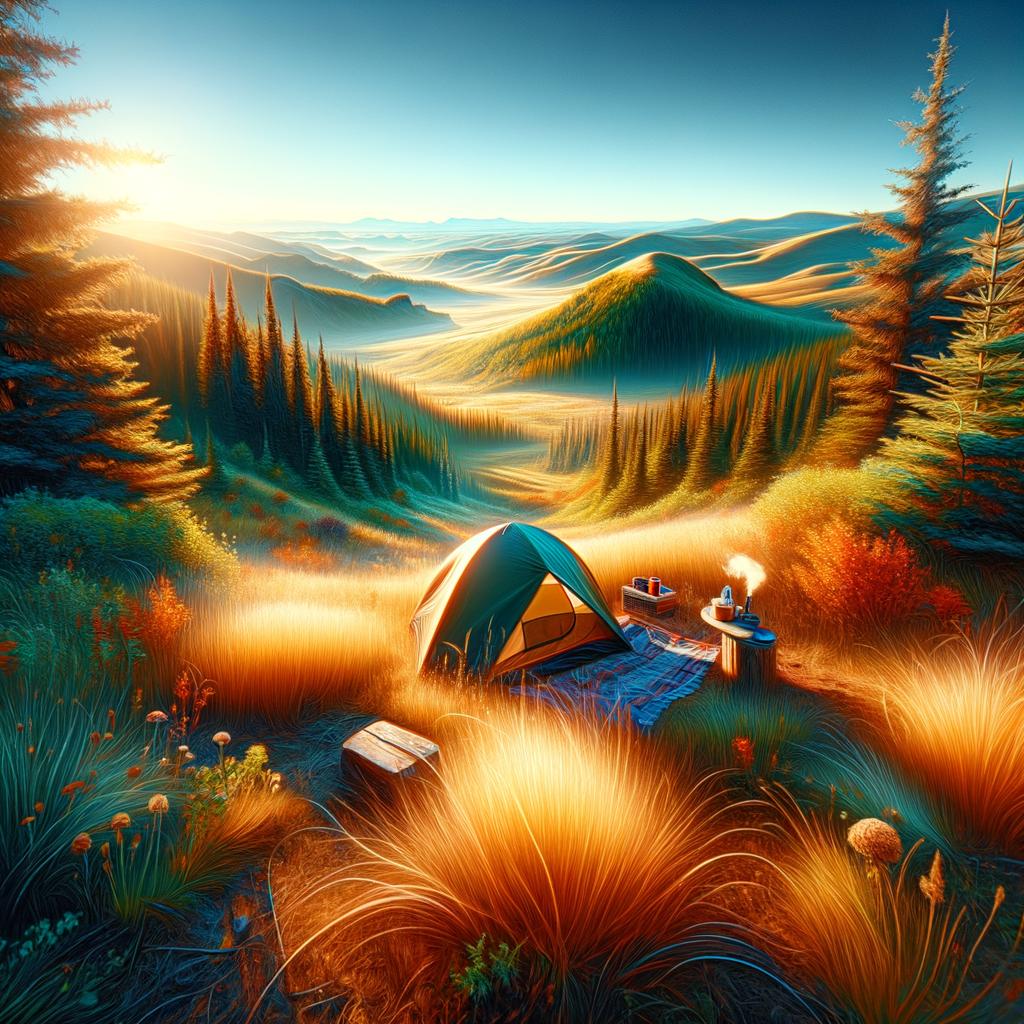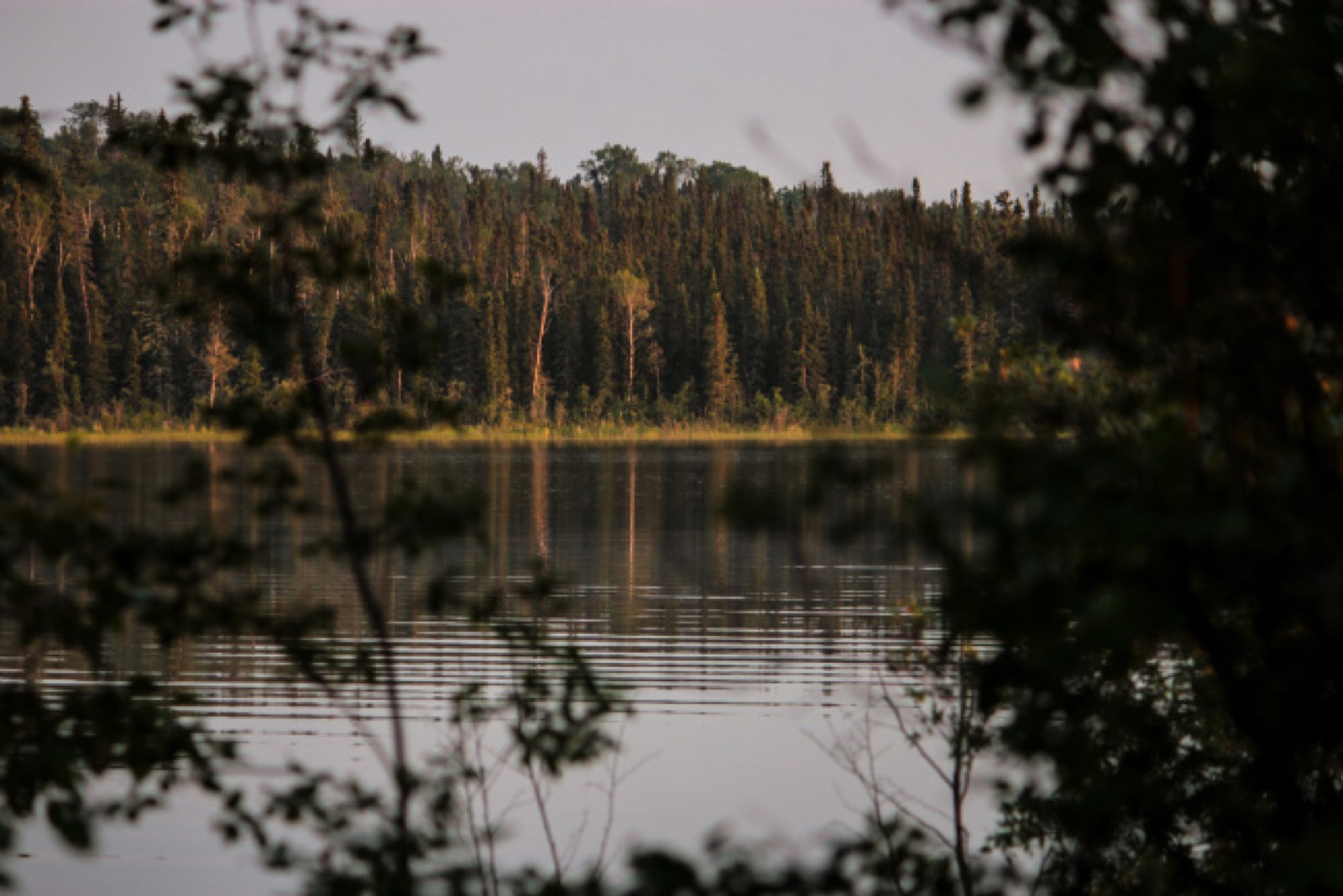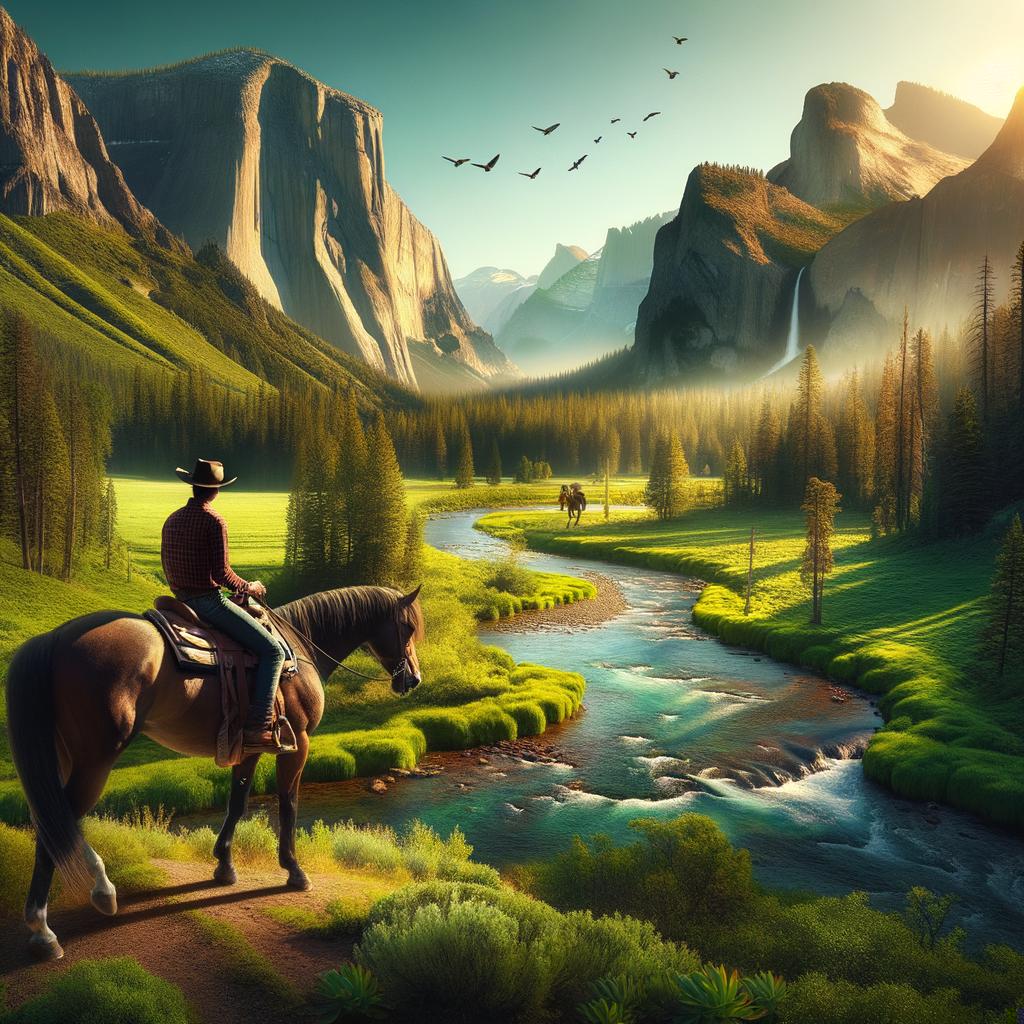Safari in Saskatchewan at Grasslands National Park
Posted on August 16, 2013 • 8 minutes • 1543 words
Table of contents
- Grasslands National Park
- Untouched Prairie Beauty
- A Hiker’s Paradise
- Saskatchewan’s Darkest Dark Sky Preserve
- Snakes, Safety, and Friendly Park Staff
- Wild Plains Bison
- History of the Bison in the Area
- Camping in Grasslands National Park
- Sun Setting Over Grasslands
- Saskatchewan Prairie Dogs
- Plains Bison Grazing
Finding wildlife in Saskatchewan isn’t particularly hard; however, one will note that cattle and horses often spot the prairie fields and pasture land more often than those more wild. Finding eagles, osprey, bison, moose, bears, and coyotes sometimes takes hours upon hours of driving, and usually quite a bit of luck. For the animal enthusiast, it can be slightly disheartening. Given the size of Saskatchewan (651,900 km²), it’s to be expected. With that being said, there is a clever way to guarantee seeing some unique wildlife. 
Grasslands National Park
Grasslands National Park is a Saskatchewan staple. While it does require some driving (it is Saskatchewan after all), it does mean you have a much higher chance of seeing something photo worthy. Four and a half hours south west of Regina, a stones throw from Montana, USA, Grasslands National Park is one of the truest forms of prairie landscape. This preservation is not only home to some beautifully unique flora, it’s also home to countless species of birds, wild bison, rattlesnakes, pronghorn antelope, prairie dogs, short-horned lizards, black footed ferrets, and many more. 
Untouched Prairie Beauty
The drive south from Regina will lead you through some of the flattest lands, which evolve into gentle rolling hills, only to be suddenly changed into a grass valley carved out by ancient glaciers. Dry cliffs and rocky buttes poke out from the landscape, creating a beautiful view that many would describe as “non-saskatchewan”. What many people often forget is that before large scale agriculture was introduced to Saskatchewan in the late 1800’s, much of the Saskatchewan landscape was exactly what you see at Grasslands National Park. Raw, untouched prairie beauty. A topography that evolved hand in hand with the flora and fauna of the region. 
A Hiker’s Paradise
During the day, there are countless hikes for every skill level, from quick jaunts, such as the Rock Creek Trail (2km loop) to the more skilled trails, such as the Butte Creek / Red Buttes Trail (16km loop), or the Zahursky Point Route (11km loop). There’s also countless square kilometers of back country hiking for those interested on exploring the park without trails. Each hike offers a different view of this beautiful locale. From stretching landscapes of the badlands of Saskatchewan, to creek crossings and surreal views of the Frenchman River. [box size=“large” border=“full”]
Pro Tip
For more information on Hiking Trails at Cypress Hills, grab a copy of the Grasslands National Park Visitors Guide at Parks Canada. [/box]
Saskatchewan’s Darkest Dark Sky Preserve
Come nightfall, you’ll be in for one of the starriest nights of your life (clear skies depending of course). The Grasslands National Park is the Darkest Dark Sky Preserve in Canada. For astronomers & amateur stargazers, this is one of the best places to be on a clear night. The recently announced Dark Sky Preserve is not only good for bringing in additional tourists, it’s also good for the habitat of nocturnal species, such as the black footed ferret, which was recently re-introduced into the area. 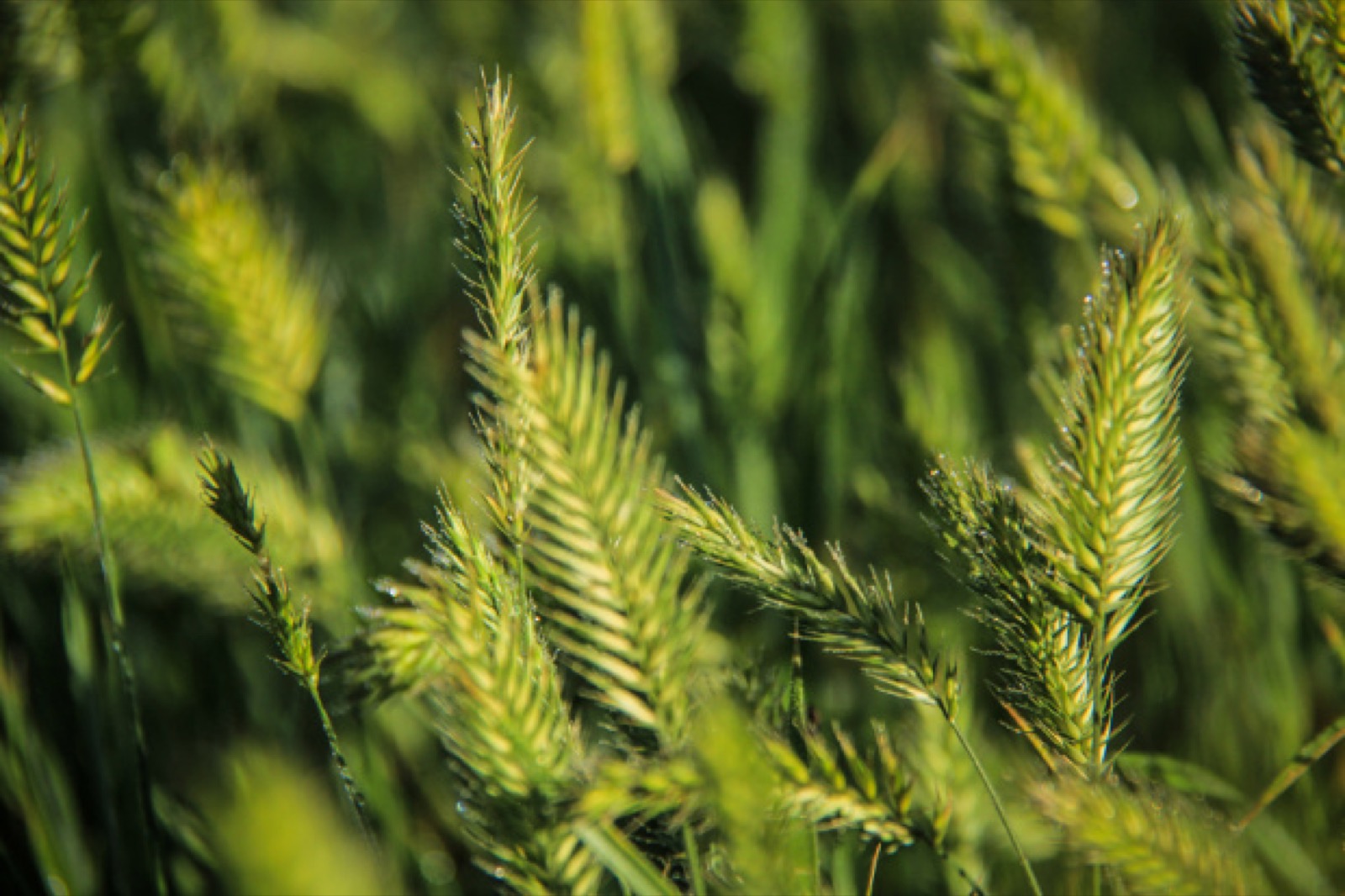
Snakes, Safety, and Friendly Park Staff
My girlfriend and I had the pleasure of camping in the Park a few weeks back. Park staff at Val Marie were immensely knowledgable and friendly, and ran through all the safety procedures before setting out to hike the Grassland trails. It’s made very clear once you’re this far south in Saskatchewan that you’re in rattlesnake country. My girlfriend, having never entered a land dominated by poisonous reptiles morbidly laughed, “Great, so this is the way I’m going to die!”. The Parks Canada staff laughed and reassured her that it’s fairly rare to come across them, and even if you do, giving the snakes their distance will ensure everyone leaves safe. The Park Staff even went so far as to offer her snake garders, which are basically thick reinforced fabric leggings which they claim will protect you if one of the slithering fellows decide to strike. The Visitor Center at Val Marie offers anyone who’s going to be doing a lot of hiking the garders, but they’re strictly optional. We decided not to take the leggings, being risk takers & all. 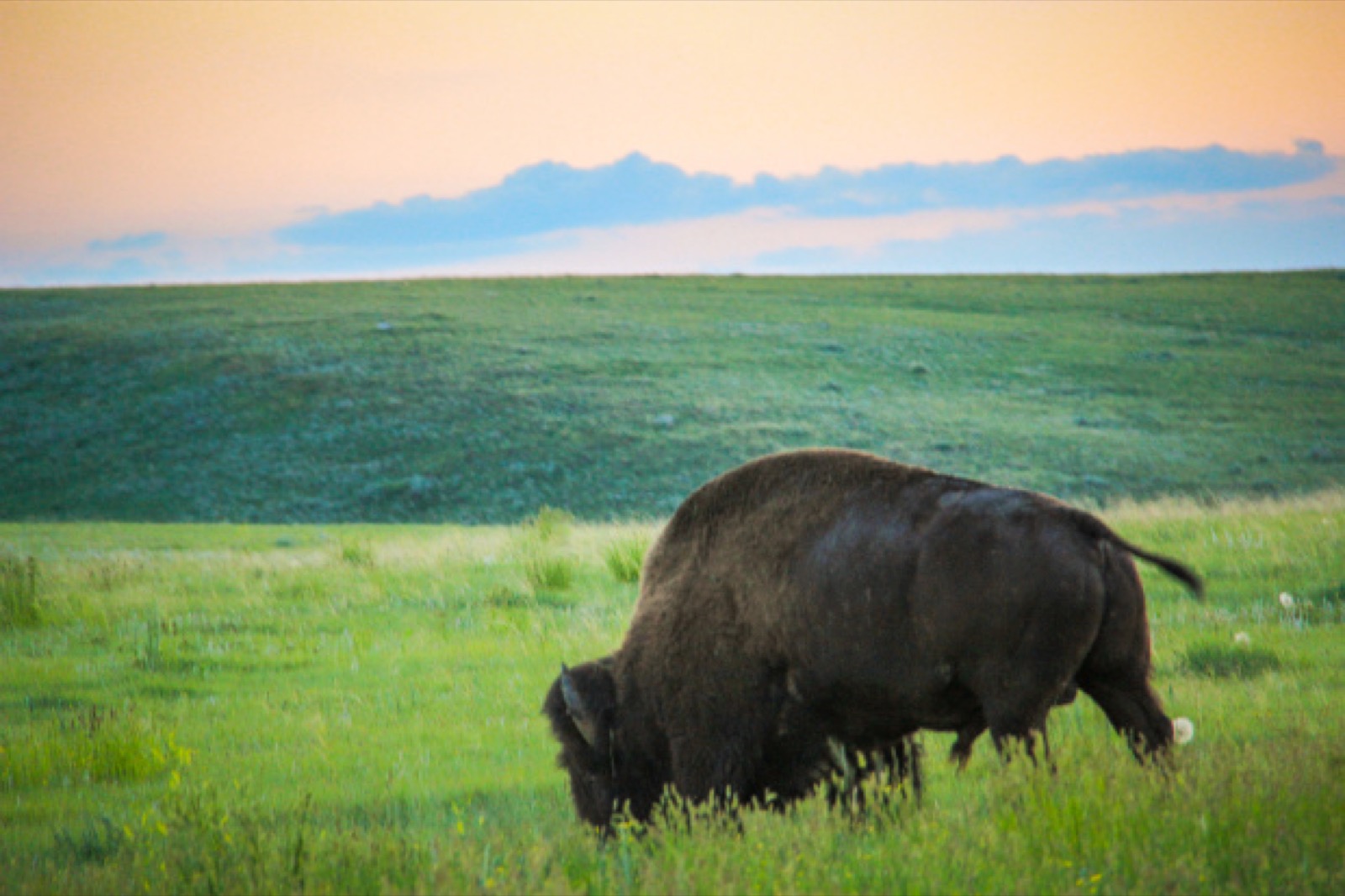
Wild Plains Bison
After leaving the Parks Canada Visitor Center in Val Marie, we were fully supplied with maps, visitors guides, and a couple of safety brochures. We drove into the park, and without even trying, came across our first group of wild plains bison. Technically, it was just a pair; however, they seemed content to claim their part of the gravel road as their own. Our car approached them slowly, we both nervously laughed, “I hope they don’t charge the car”. Fortunately, they didn’t. Rather, they moved as slow as possible out of the way. During which time we managed to get a few photos. We high-fived over the first encounter. _Success! _ [box size=“large” border=“full” type=“info”]
History of the Bison in the Area
Back in December 2005 the Plains Bison were re-introduced to the park. Prior to European Settlement, Bison dominated this region. With millions upon millions of herds stampeding across the country. A significant animal in first nations history, it was one of the first to be effected by European Settlement. By the 1880’s, most of the Bison were gone, due to over hunting, and due to their natural habitat being transformed into agricultural land. What was once 71 re-introduced bison, have now become over 300 bison and 40 calves. Without a doubt, one of the most majestic creatures you can find in Saskatchewan. For more information on the Plains Bison, check out Parks Canada’s Bison Updates
. [/box] 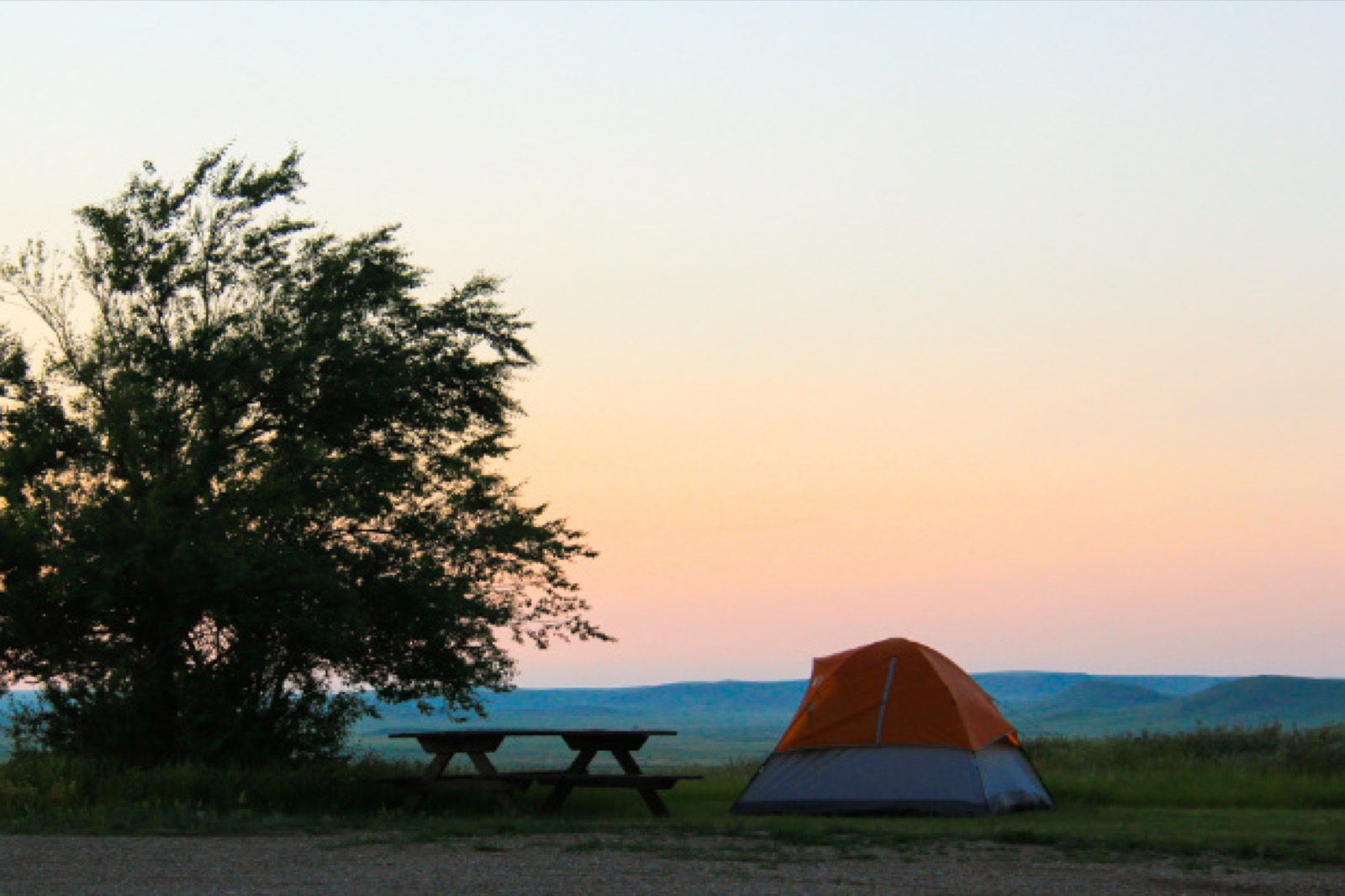
Camping in Grasslands National Park
We setup camp just before sunset in a small campground with a handful of lots. Located a kilometer or so from the Frenchman River, we opted to save the hiking for the next day. We were the only ones camping that weekend, and an eerie soundscape of prairie noises calmly sang to us. Waving grass, crickets, gentle blowing wind, soothed the often stressful time known as tent setup. Looking out from our campsite, a 360 degree view of grasslands and rolling hills surrounded us. Parks Canada had setup an in-ground binocular set to allow the viewing of animals slightly further than the eye could make out. In one spin of the metallic eyepiece, I spotted bison, antelope, and a group of kayakers who recently packed up from the Frenchman River. 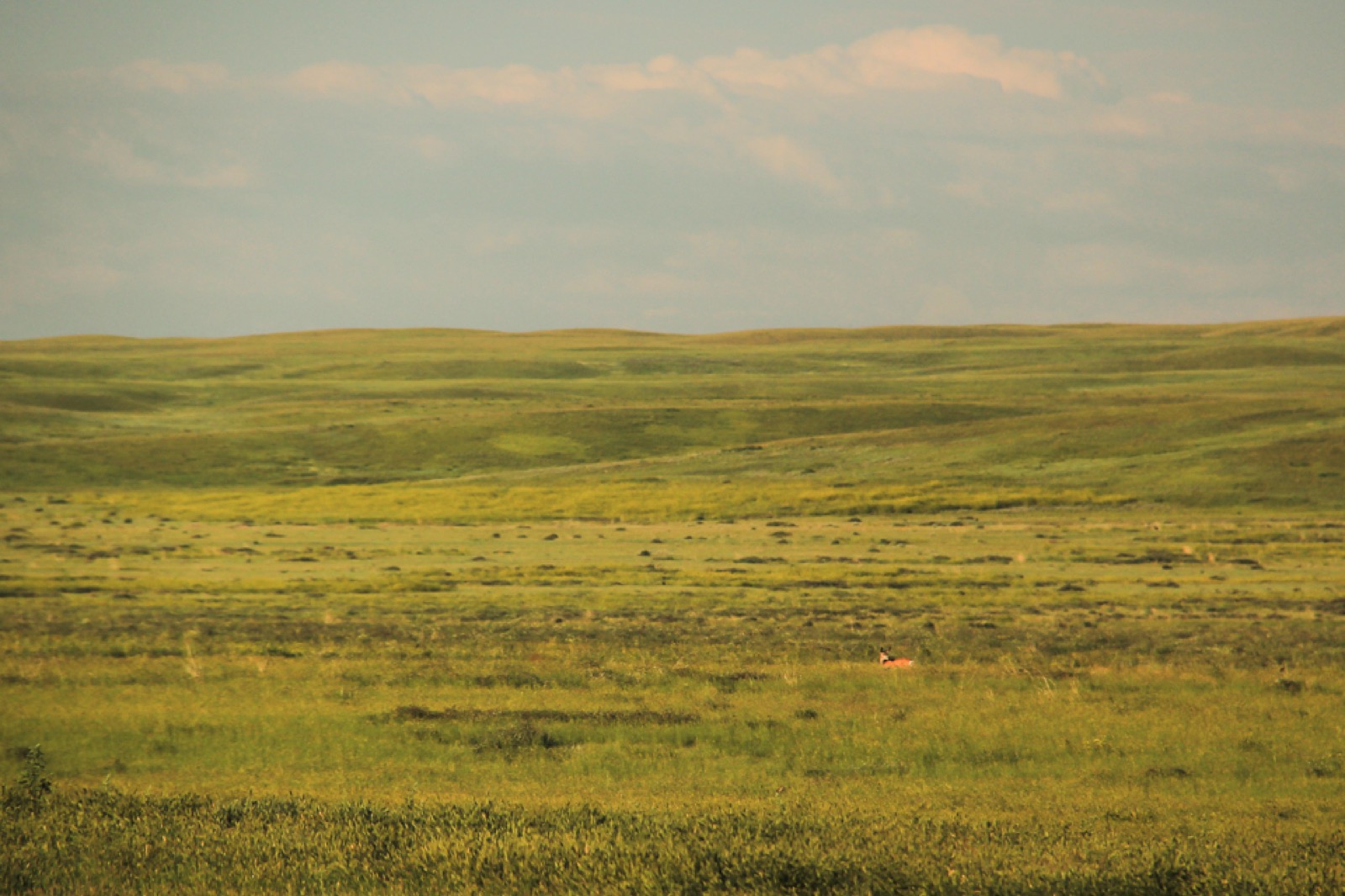 [box size=“large” border=“full”]
[box size=“large” border=“full”]
Pro Tip: Ask Park Staff About Fire Regulations
Due to the dry nature of the grasslands, there is typically a fire ban in the area. Propane camping stoves are allowed, but open fire’s are not. Park’s Canada will advise you to be as careful as humanly possible. A handful of years back a large part of the park burned away due to fire, and they’d really like to prevent that from happening again. [/box] 
Sun Setting Over Grasslands
As the sun dropped below the horizon, it’s remaining light shone through purple, pink, and orange clouds, covering the park in a warm orange glow. Our mosquito net was propped up, keeping the blood suckers out while we waited for stars to come out. Within an hour, the twilight exploded in a vivid starscape. The milky way spread across the sky. The grasslands began to erupt in activity. Panning my head, I noticed how completely alone we were in the park. There wasn’t a single light to be found. A band of coyotes began howling from the north east, not more than a handful of kilometers away. Their dog like calls echoed through the valley. Then like clockwork, another band of coyotes from the north west, joined in, howling for comfort, for territory, or just because it was a nice night out. 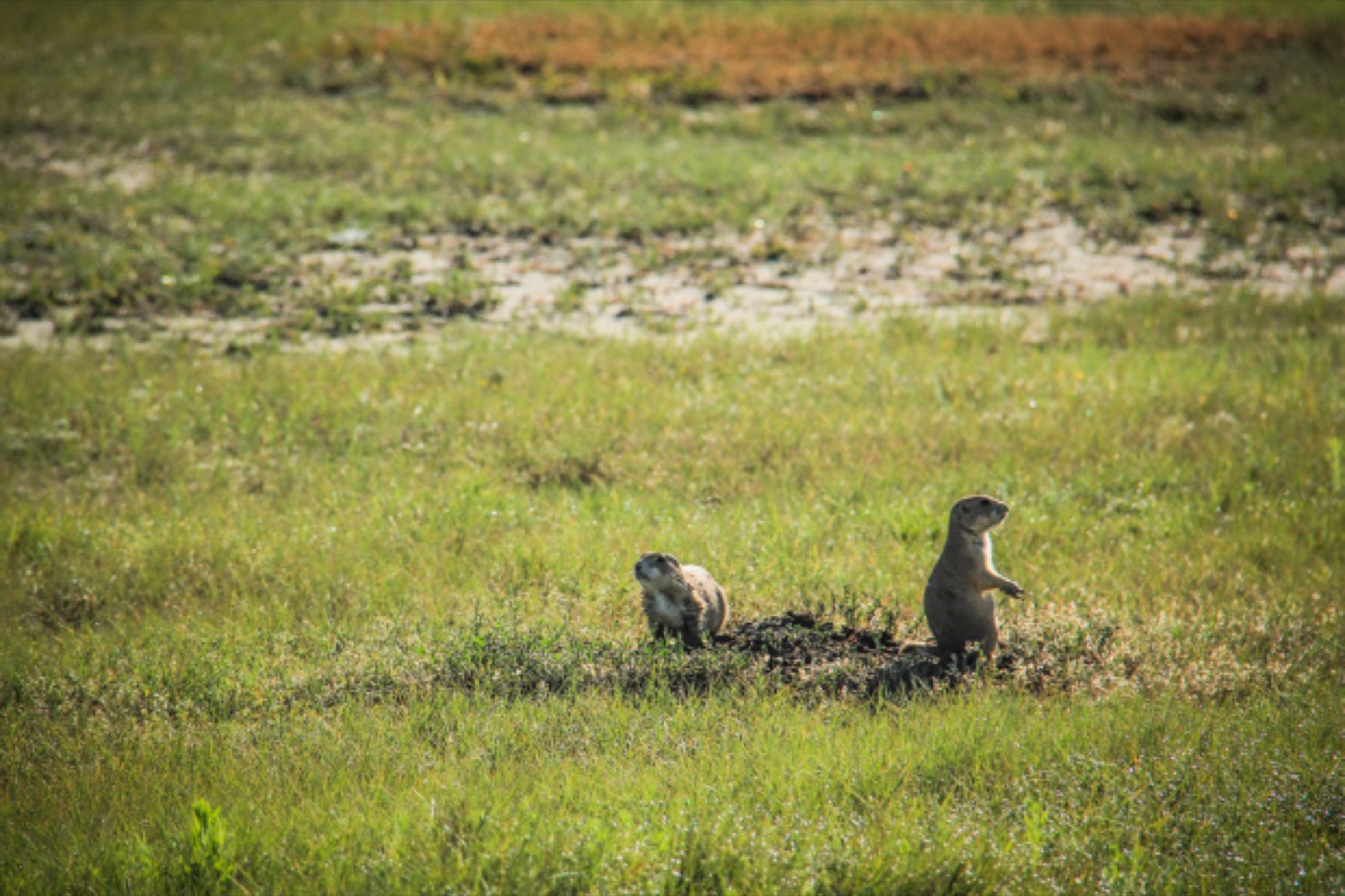
Saskatchewan Prairie Dogs
Day finally broke, and we drove to the Prairie Dog sanctuary. These cute little critters are often seen as enemies by farmers, due to their innate ability to turn a perfectly healthy field into a labyrinth of holes. With agriculture dominating Saskatchewan, there aren’t many places they can safely call home; however, in Grasslands National Park, they seem to have found a corner (or two) to call their own. As we pulled the car over and stepped out of the vehicle, we began to walk along the road. Prairie Dog’s barked, alerting their family & friends of our presence. We gave them their space, feeding into their apparent confidence. This was their land, and no camera touting tourist was going to take it from them. We smiled, snapped a few pictures, and left. 
Plains Bison Grazing
As we packed up for the day, we went on one final hike, one of the quick 2 kilometer loops. We stepped off the trail in hopes of finding more bison, rather than a snake. As we hiked over a hill, making careful progress, a plains bison was grazing within thumb-covering distance (the scientific measurement of safety with wildlife). It’s surprising how easy they are to spot. We stopped, ensuring we wouldn’t spook him. The last thing we’d want is a charging buffalo coming out way. We snapped our pictures, stared on the open landscape, and began our travels back home. A superb weekend trip that will surely be done again. [mappress mapid=“107”]
